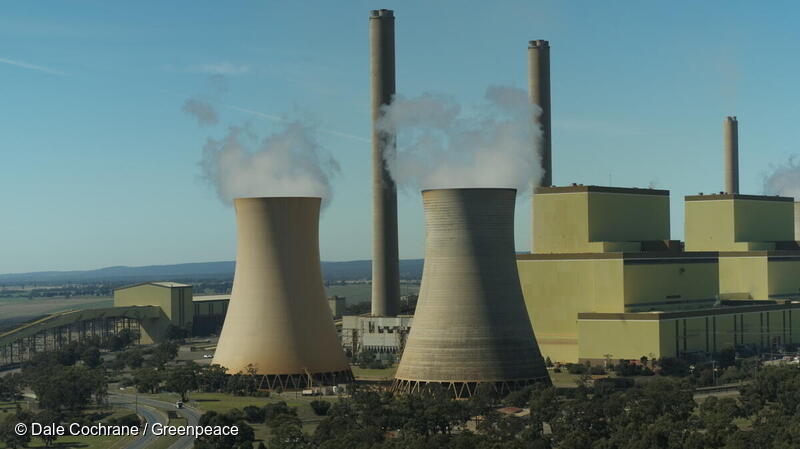AGL, Australia’s biggest climate polluter, has made what Greenpeace Australia Pacific describes as a “token effort” in announcing it will delay the closure of its notorious Loy Yang A coal-burning power station to 2045 and Bayswater power station to 2033, far beyond the coal closure timeline needed to ensure a safer climate.Glenn Walker, senior campaigner at Greenpeace Australia Pacific, said that AGL has once again missed the opportunity to accelerate the closure of its coal-burning fleet, which includes Australia’s worst-polluting coal burning power station, to 2030 or sooner.
“AGL doesn’t even get a golf clap for its timid token effort in delaying the closure timeline for Loy Yang A, Australia’s worst-polluting coal-burning power station, to 2045. Coal is the biggest threat to a safer climate future, and a terrible financial investment, as AGL’s plunging share price and reputation demonstrates. In delaying Loy Yang A and Bayswater’s inevitable closure, AGL is putting worker and investor security, as well as the climate, at serious risk,” he said.
“Loy Yang A and its attached brown coal mine pump out over 20 million tonnes of climate pollution every year. Keeping this brown-coal blight on our climate open until 2045 will produce a further 460 million tonnes of toxic emissions, equivalent to the pollution from over 100 million cars, putting Australia’s chance at a safer climate future in jeopardy.
“Renewables are driving Australia’s electricity prices down to rank amongst the cheapest in the world, and delaying coal’s inevitable exit will be costly. With market and environmental pressure building to a head, and consumers increasingly rejecting dirty power, it’s time for AGL to catch up with the rest of the market and make the switch to cleaner energy.”
AGL previously had Loy Yang A’s closure date set for 2048, just two years before Australia’s net-zero emissions by 2050 deadline, and Bayswater’s closure date set for 2035, but market and investor pressures around its tardy approach to the energy transition have seen the company’s fortunes plummet.
The UN and International Energy Agency have both warned that Australia’s coal power stations must close by 2030 to ensure a safer climate and economic future for our country. In addition, the Australia Energy Market Operator (AEMO) forecasts that it is likely that brown coal will exit Australia’s energy system by 2032 at the latest, meaning that AGL’s announcement today puts it significantly behind the pace of the energy transition.
Over the past year, troubled company AGL has also weathered the abrupt departure of former CEO Brett Redman, unsuccessfully attempted to sue Greenpeace, wiped over $2 billion from its share price and saw a teenage climate activist run for its board on a platform to transition the company to renewables by 2030, gaining over $60 million worth of investor votes at its AGM.
It also saw its biggest customer, Rio Tinto, announce it will shift to power its operations, including the Tomago Aluminium Smelter, mostly with renewables by 2029, putting the viability of Bayswater power station in doubt. Mostly recently, AGL was ranked last in Greenpeace’s Green Electricity Guide, which ranks Australia’s energy retailers on their green credentials.
Glenn Walker says that it’s time for AGL to be honest and transparent with shareholders, staff and the community about its future direction.
“We’re calling on AGL to provide certainty to workers and investors and work with government to develop a managed transition plan to replace both Loy Yang A and Bayswater with renewables by 2030,” he said.
For more information or to arrange an interview contact Fiona Ivits on 0487 003 872 or fiona.ivits@greenpeace.org


